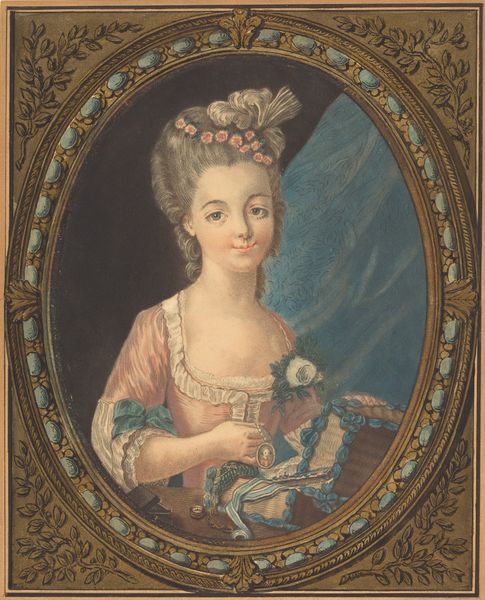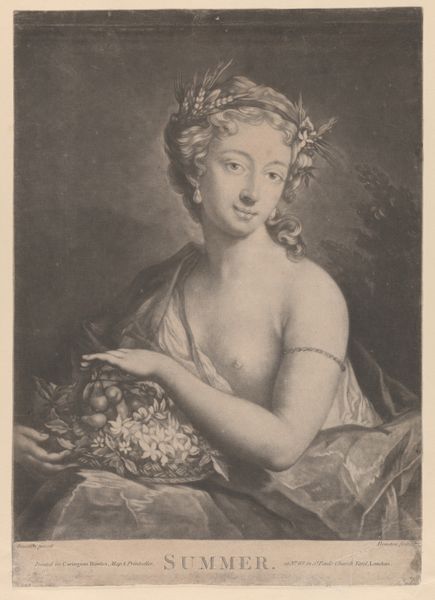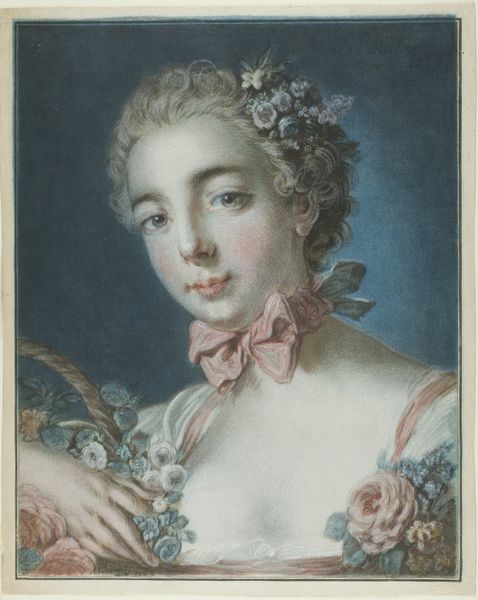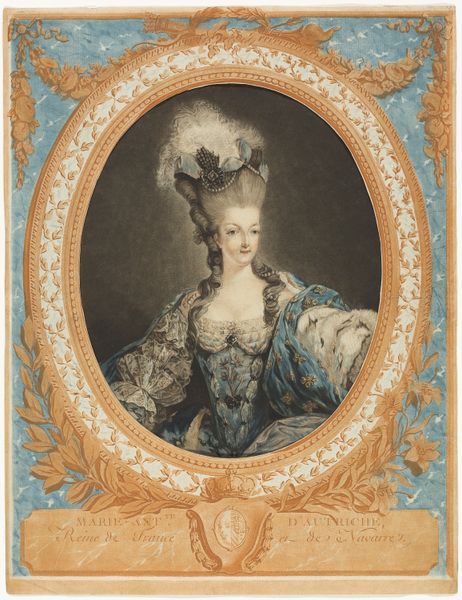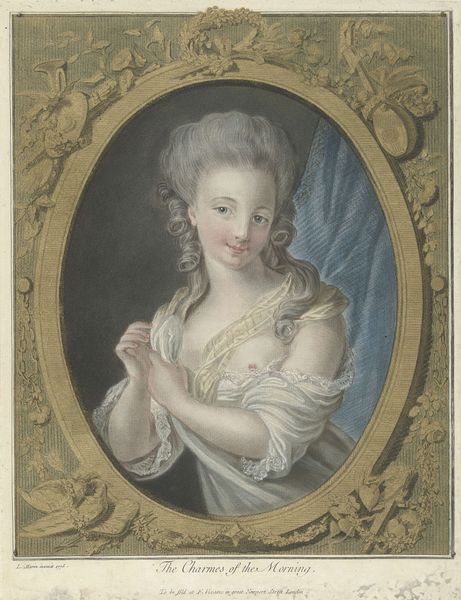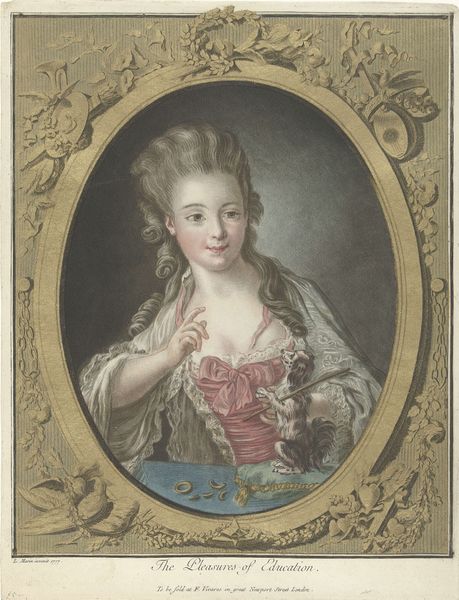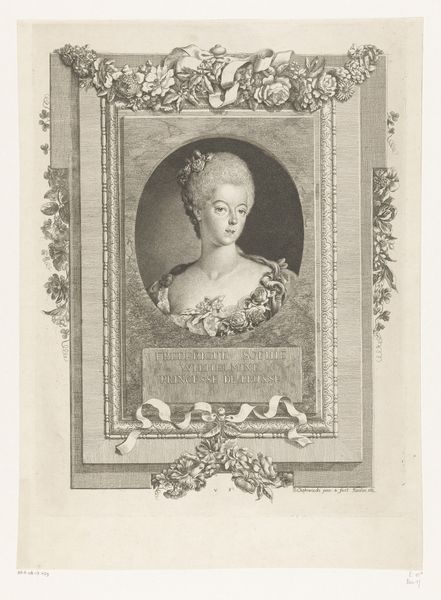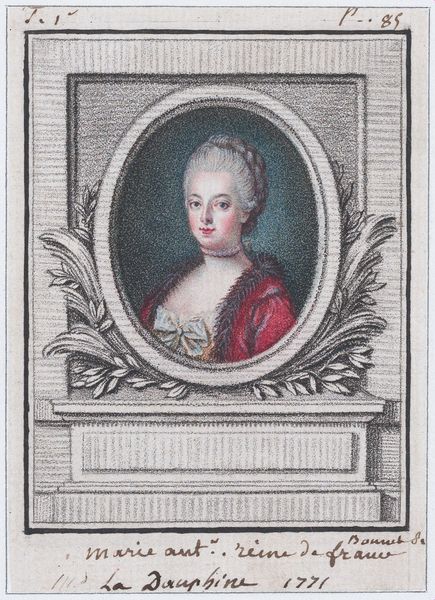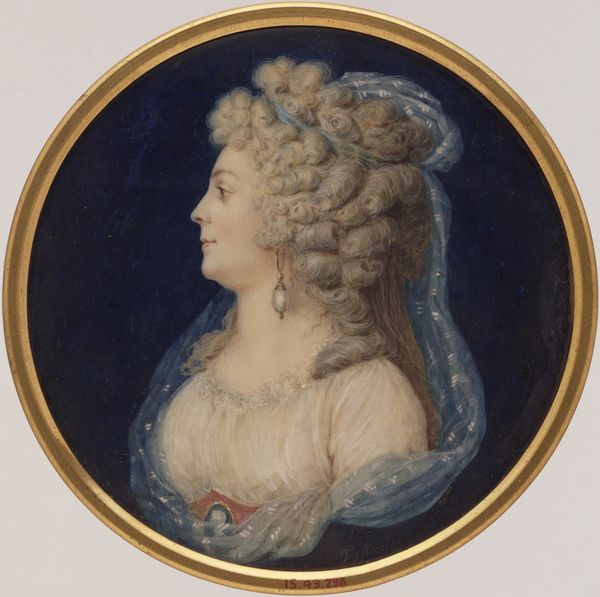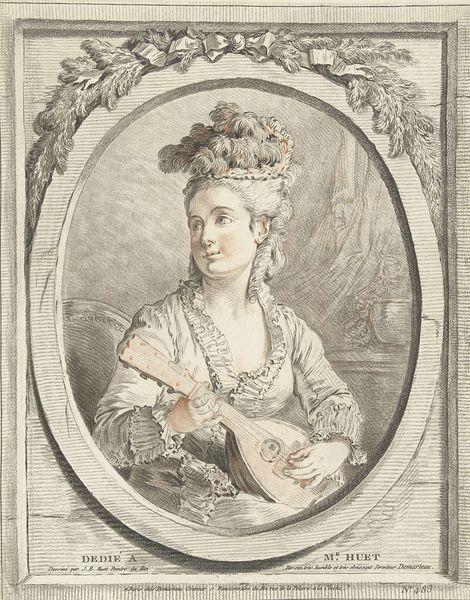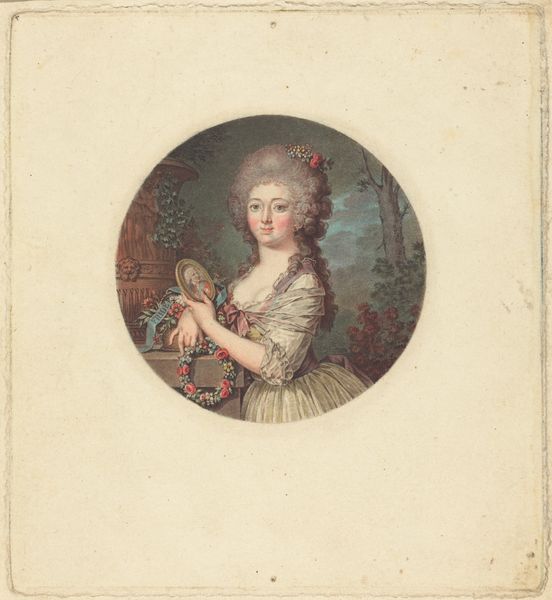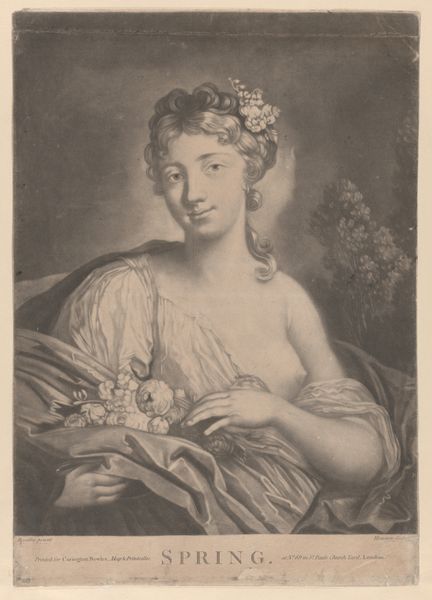
Copyright: National Gallery of Art: CC0 1.0
Editor: This is "L'agreable neglige" by Jean Francois Janinet, from 1779, a watercolor print. There's something so intimate about this portrait, but also…staged. What do you see when you look at this piece? Curator: I see a carefully constructed image, ripe with symbols of beauty, leisure, and status. Look at the roses – classically associated with love and femininity, yet here, almost props. Does the woman *truly* represent what the roses traditionally mean, or does she reflect a performance, a codified presentation of self? Editor: A performance…that's interesting. The title translates to "The Agreeable Neglect," right? It's like she's trying to appear casual, but everything feels very deliberate. Curator: Exactly! That 'neglect' isn't accidental; it’s carefully curated. Consider the pearls, the soft fabric, even the pose. How does the symbolism of Rococo portraiture function as a projection of power for the sitter and commissioner? The painting whispers more about societal expectations than genuine emotion, doesn't it? Editor: You're right! It's not just about capturing someone's likeness; it’s about projecting a certain image, and then re-projecting this image through the print medium... What sort of symbols and expectations might be projected? Curator: The roses, her pearls and the way they seem so loose, perhaps suggesting both wealth and accessibility. Look also at the oval frame... Does it add to or subtract from her supposed 'agreeable neglect?' Editor: So, it’s less about the individual and more about fitting into a role defined by symbols…wealth, beauty and perhaps a sense of openness that's actually quite controlled. It definitely makes you question the ‘feminist-art’ tag it has… Curator: Yes. The performance of self, the careful staging...it's a mirror reflecting societal values and constraints, rather than necessarily challenging them. Editor: Wow, I'll never look at a Rococo portrait the same way again. It really is about deciphering the symbols and understanding the message they're sending. Curator: Indeed! It's about understanding how the image participates in, or even resists, the symbolic order of its time.
Comments
No comments
Be the first to comment and join the conversation on the ultimate creative platform.
